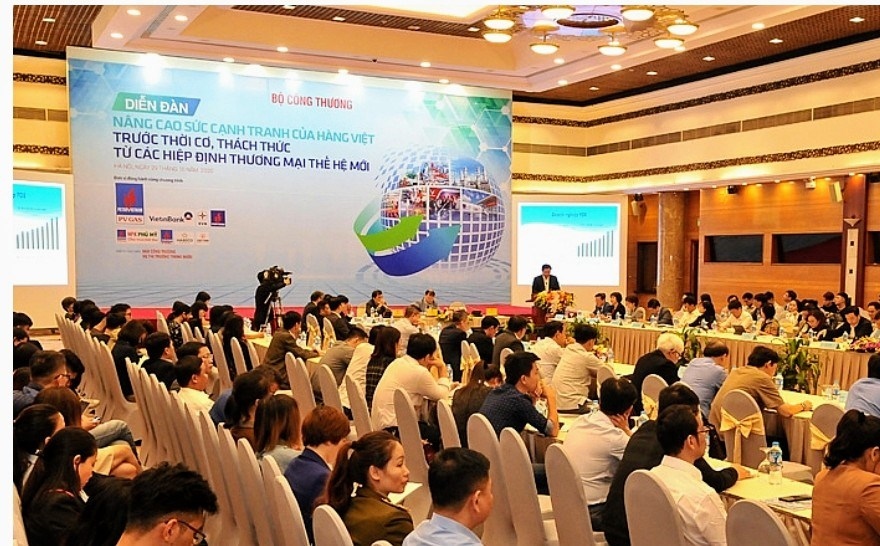Vietnamese products secure foothold in new markets through new generation FTAs
VOV.VN - Joining new generation Free Trade Agreements (FTAs) has allowed Vietnamese goods to conquer fresh consumers and dominate the domestic market, whilst achieving greater penetration and success in the international market.
Upon addressing a forum held on October 29 to discuss ways to improve the competitiveness of domestic items in the face of opportunities and challenges from new generation trade agreements, Deputy Minister of Industry and Trade Do Thang Hai affirmed that FTAs have become a common trend in the world. In the event organised by the Ministry of Industry and Trade, the Deputy Minister noted that FTAs are a result of ever-increasing globalisation and the expansion of economic co-operation between countries.
As part of this trend, the country is currently a member of 13 FTAs that have either come into force or are in the process of being implemented. Of these deals, the Comprehensive and Progressive Agreement for Trans-Pacific Partnership (CPTPP) and the EU-Vietnam Free Trade Agreement (EVFTA) are the first new generation FTAs that the nation has participated in.
Signing up to FTAs has helped the country expand and diversify its export and import markets, while the financial service market has become more developed with the greater involvement of many foreign investors. Most notably, institutional and policy systems have also gradually improved in order to meet the requirements of integration and realise commitments of the various FTAs.
The participation in these trade agreements has contributed to increasing Vietnamese GDP by more than 300%, whilst import-export turnover has risen by 350%, according to Deputy Minister Hai.

Amid the complicated global impact of the novel coronavirus (COVID-19) pandemic, many countries have faced interrupted supply chains and have suffered declined economic indicators, with the nation’s retail sales of goods emerging as one of the bright spots of the macro-economy.
The third quarter of this year witnessed total retail sales of consumer goods and services reach an estimated figure of over VND1.305 trillion, a rise of 14.4% over the second quarter of 2020 and 4.5% higher compared to the same period last year. Indeed, the retail sale of goods during the opening nine months of the year hit more than VND2.907 trillion, accounting for 79.1% of the total and representing an annual rise of 4.8%.
“This is a positive result, clearly demonstrating the role of the supply of domestic goods in the unpredictable circumstance of pandemic and natural disasters. At the same time, it clearly shows the role of Vietnamese products in the domestic market which become increasingly popular to local consumers,” Deputy Minister Hai said.
Currently, although the market opening in new-generation FTAs is rapidly increasing, domestic products still assert their foothold and are being prioritised by distributors and retailers in the structure of goods displayed on shelves. Indeed, the proportion of Vietnamese items in modern distribution systems is being maintained at a high level.
Despite acknowledging the great benefits brought about by FTAs, many participants noted during the forum that local firms and Vietnamese products are also facing plenty of challenges. This is largely down to the goods of many countries in the FTA increasing their volume of imports into the nation with a tariff elimination rate of up to 100%, especially with regard to groups of goods that the country is not strong in.
Moving forward, it is anticipated that domestic enterprises and industries must be proactive in preparing their capacity, source of goods, and improving their competitiveness. This can be achieved through building long-term and methodical plans, in addition to improving production and business capacity through the use of science and technology and existing successful models to enjoy the best preparation in the face of competitive pressure.

